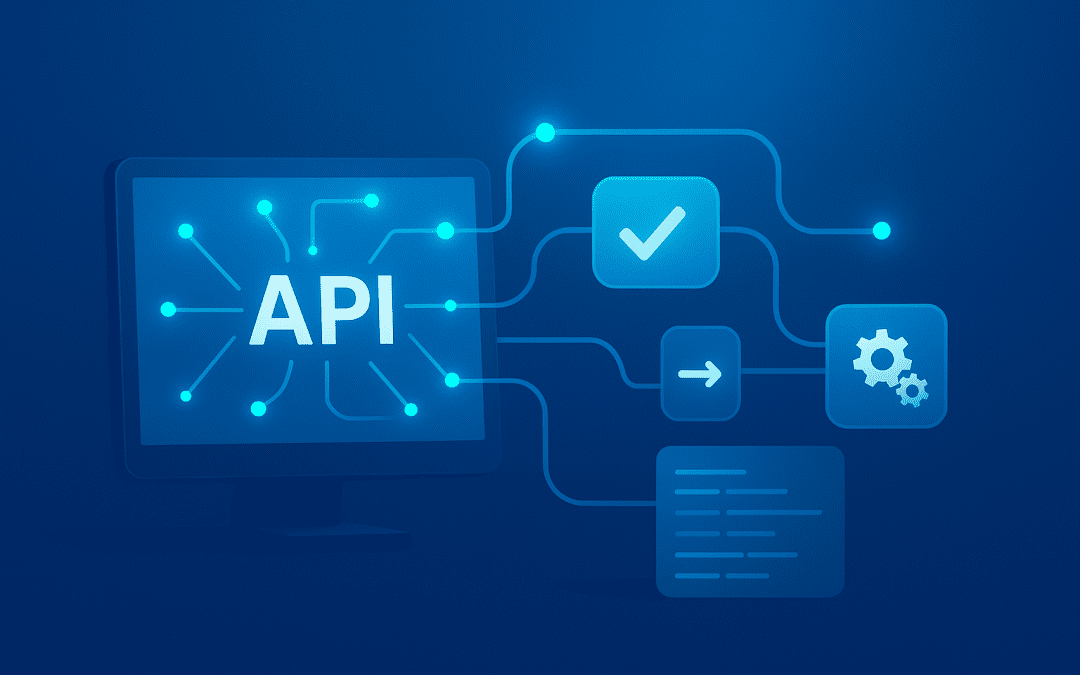API Workflow Automation: Transform Your Business
Here’s the thing about running a small to medium-sized business in 2025… you’re drowning in manual processes that eat up time, money, and your team’s sanity. I was talking to a business owner last week who told me her team spends 3 hours every morning just moving data between systems. Three hours! That’s nearly half a workday lost to digital busywork before anyone can focus on actual customer service, sales, or strategy. Sound familiar? Your e-commerce platform doesn’t talk to your accounting software. Your customer data lives in spreadsheets that someone has to manually update. Orders come in through one system, but you have to re-enter everything into three others. It’s like having a modern business where every department speaks a different language. The truth is, API workflow automation isn’t just a nice-to-have anymore – it’s becoming essential for businesses who want to stay competitive without burning out their teams.
The Real Impact of Disconnected Systems
Let me paint you a picture of what this digital chaos actually costs you.
Time hemorrhaging. Your best people – the ones who should be solving problems, serving customers, and growing your business – are stuck playing data entry clerk. They’re copying information from System A to System B, then manually checking if everything matches in System C.
Errors multiplying. Every manual handoff is another chance for human error to creep in. One typo in a customer email, one missed decimal point in an invoice, and suddenly you’re dealing with service issues or billing problems that damage your reputation and eat into your profits.
Visibility vanishing. When data lives in silos, you can’t see the full picture. You’re making important decisions based on information that might be hours (or days) out of date.
Here’s what really gets me… these aren’t technical problems. They’re business problems wearing technical disguises.
How API Workflow Automation Transforms Your Operations
Think of APIs as translators at a United Nations meeting. They help your different systems understand each other and work together seamlessly.
Real-time data synchronization means when a customer places an order, it automatically triggers inventory checks, payment processing, shipping coordination, and customer notifications – all without human intervention. No more phone calls asking “Did you update the system?” because the system updates itself.
Automated reporting can pull data from your sales platform, customer service tools, and financial systems to generate performance reports automatically. Instead of spending days compiling data at month-end, you have real-time insights whenever you need them.
Smart customer management connects your CRM with your marketing platform, support tickets, and sales data. Every team member sees the complete customer picture without having to ask around or dig through multiple systems.
Seamless financial operations link your sales channels directly to your accounting software. Invoices generate automatically, payments reconcile in real-time, and you always know exactly where your cash flow stands.
The businesses that embrace API workflow automation aren’t just saving time – they’re creating competitive advantages their rivals can’t match.
Getting Started Without Overwhelming Your Team
Look, I know what you’re thinking. “This sounds great, but we can barely keep up with our current systems. How are we supposed to add more complexity?”
Here’s the secret: you don’t have to revolutionize everything at once.
Start with your biggest pain point. Maybe it’s the weekly sales report that takes someone a full day to compile. Or the customer onboarding process that requires touching five different systems. Pick one workflow that makes everyone groan when it comes up.
Assess your current systems first. What data do they already capture? What formats do they use? Some of your existing software might already have API capabilities you didn’t know about.
Map your ideal workflow from start to finish. What would happen if information flowed automatically between systems? What manual steps would disappear? What new insights would become available?
The key is building these API integrations in a way that enhances your team’s capabilities rather than replacing them. Your people become system orchestrators instead of data entry operators.
Conclusion
The future belongs to businesses who can move information as efficiently as they move products and serve customers. API workflow automation isn’t about replacing your team – it’s about unleashing their potential to focus on what really matters: innovation, quality, and customer satisfaction.
Every day you wait, your competitors are potentially gaining ground. But every automated workflow you implement gives you back time, accuracy, and competitive advantage.
The question isn’t whether you need API workflow automation. The question is: which process will you automate first?
Interested in API Workflow Automation?
Ready to see which workflows in your business are prime candidates for automation? The Mojoe.net team specializes in helping small and medium-sized businesses identify and implement API integrations that deliver real ROI. Contact us today for a complimentary technical assessment – we’ll show you exactly where automation can make the biggest impact in your specific operation.

If you would like to discuss Your Website’s Search Engine Optimization with Mojoe.net or your website’s analytics, custom logo designs, overall branding, graphic design, social media, website design, web application, need custom programming, or custom software, please do not hesitate to contact us, call 864-859-9848 or you can email us at dwerne@mojoe.net.


Recent Comments